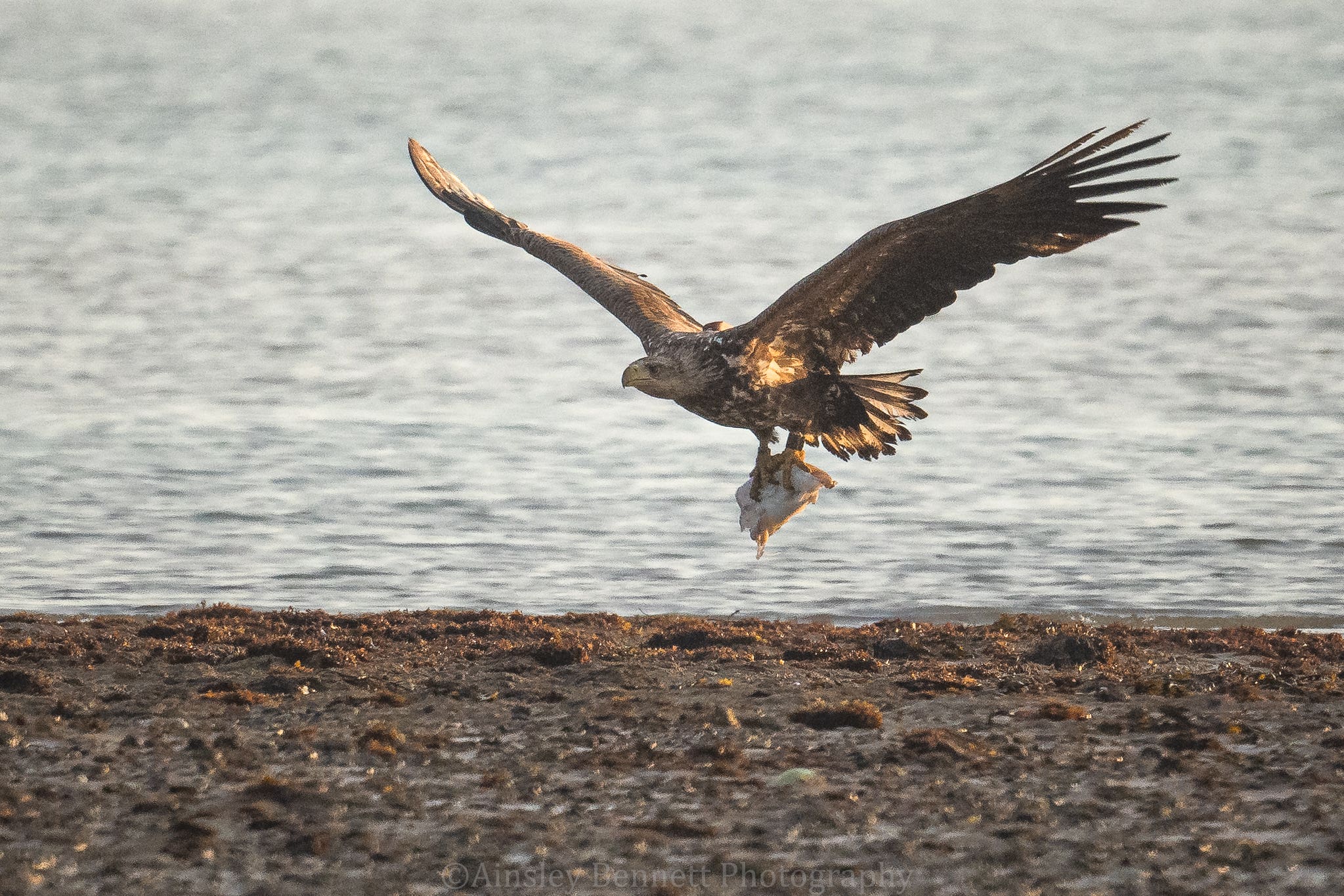Lamb no longer a major food source for white-tailed eagles – study
RSPB Scotland said it hopes the study will provide some reassurance to famers and crofters concerned about their livestock being hunted.

Your support helps us to tell the story
From reproductive rights to climate change to Big Tech, The Independent is on the ground when the story is developing. Whether it's investigating the financials of Elon Musk's pro-Trump PAC or producing our latest documentary, 'The A Word', which shines a light on the American women fighting for reproductive rights, we know how important it is to parse out the facts from the messaging.
At such a critical moment in US history, we need reporters on the ground. Your donation allows us to keep sending journalists to speak to both sides of the story.
The Independent is trusted by Americans across the entire political spectrum. And unlike many other quality news outlets, we choose not to lock Americans out of our reporting and analysis with paywalls. We believe quality journalism should be available to everyone, paid for by those who can afford it.
Your support makes all the difference.Seabirds and fish are the most important food source for white-tailed eagles, with lamb in their diet having decreased over the last 20 years, new research has found.
The study – The breeding season diet of white-tailed eagles in Scotland – examined the species’ diet from 1998 to 2017, and found the amount of lamb in the seabirds’ diet has decreased over the years.
The research was conducted by a group of white-tailed eagle experts and was published in the Scottish Ornithologists’ Club (SOC) journal, Scottish Birds.
RSPB Scotland said it hopes the study will provide some reassurance to famers and crofters concerned about their livestock being hunted.
The paper shows the species has a diverse diet during breeding seasons, with 11,375 food items recorded across 293 samples taken from nest sites across 92 white-tailed eagle territories in Scotland.
It found that 121 species were recorded, including 70 species of bird, 17 species of mammals and at least 30 species of fish.
When the study began in 1998 there were only 18 pairs of white-tailed eagles, also known as sea eagles, in Scotland, with the majority living in the Inner Hebrides.
By 2017, there were at least 122 pairs across the country, and a total of 58 nests were sampled in that year.
The analysis found that as time went on, the proportion of lamb remains in nests decreased.
Between 1998 and 2002, 15 nests were sampled and lamb accounted for more than 30% of items in five of those nests.
However, by 2017, lamb accounted for the same percentage in just five of 58 nests sampled, demonstrating a stark decrease in how much the species relies on lamb as a food source.
White-tailed eagles are scavengers and generally rely on carrion for food. The study found lambs were occasionally killed, but were generally smaller in size, making them more vulnerable to predators.
It has been fascinating to see how the diet varies between individual territories and across regions
The researchers said: “The previously widespread view that lambs are an important food for white-tailed eagles has been superseded; the prevailing evidence now is that marine items (seabirds and fishes) are the most important breeding season food in Scotland.”
At coastal territories other seabirds and fish made up the majority of food remains found in nests, whereas wetland birds and rabbits were more common in territories found further inland.
The study noted the eagles are continuing to recolonise historic territories away from coastal areas, where mountain hare and freshwater fish are important food sources.
Robin Reid, one of the study authors, said: “This publication has been made possible through collaboration between many researchers and fieldworkers and with support from several organisations.
“As a result, the findings are based on large and robust dataset with prey remains collected from the majority of white-tailed eagle territories occupied in Scotland during the study period.
“It has been fascinating to see how the diet varies between individual territories and across regions.
It is fantastic to see the return of such charismatic and iconic species as white-tailed eagles to Scottish skies, and it is heartening that the population is expanding into areas where they have not been seen in over a century
“The wide range of prey items recorded demonstrates that the white-tailed eagle is an opportunistic and adaptable predator and scavenger, consistent with findings from studies elsewhere across the species range in Europe.”
Eilidh McNab, development officer for the SOC who published the paper, said: “The SOC is delighted to support the publication of important research in Scottish ornithology through our quarterly journal, Scottish Birds.
“It is fantastic to see the return of such charismatic and iconic species as white-tailed eagles to Scottish skies, and it is heartening that the population is expanding into areas where they have not been seen in over a century.
“This paper offers a fascinating insight into the diet of our largest bird of prey, and greatly adds to the knowledge base of their feeding behaviours in Scotland.”
Duncan Orr-Ewing, head of species and land management at RSPB Scotland and member of the National Sea Eagle Stakeholder Group, said: “This study will be invaluable for an evidence-based approach when drawing up the next Sea Eagle Management Scheme and targeting of available resources to geographical areas where support is most needed.
“We also hope that the results of this study will provide some reassurance to famers and crofters in connection with their concerns about livestock predation and when noting the largely natural diet of most breeding White-tailed Eagles in Scotland.”